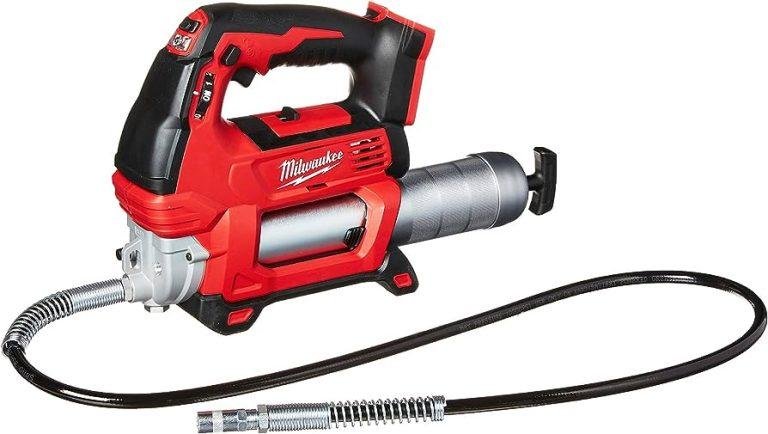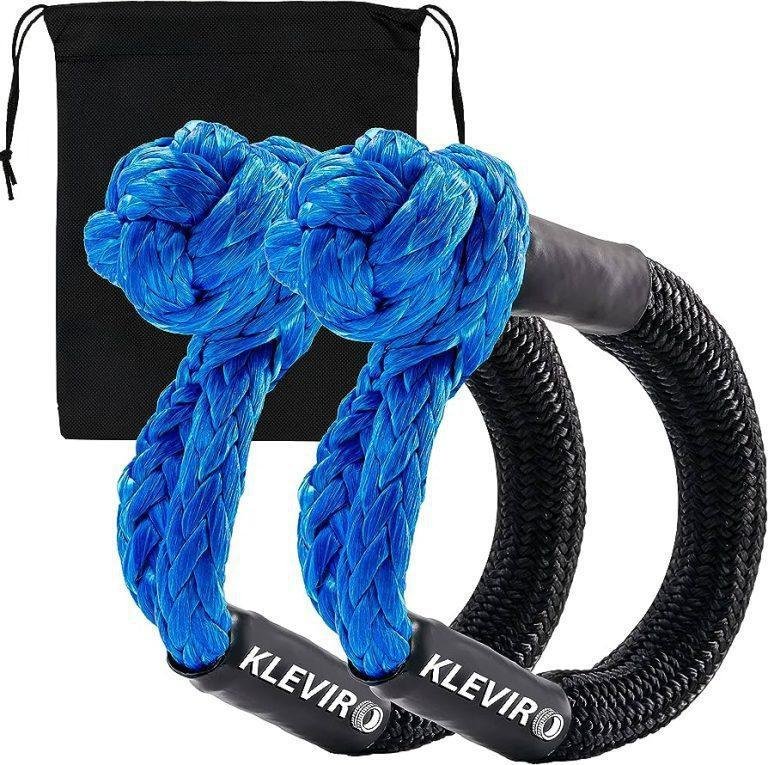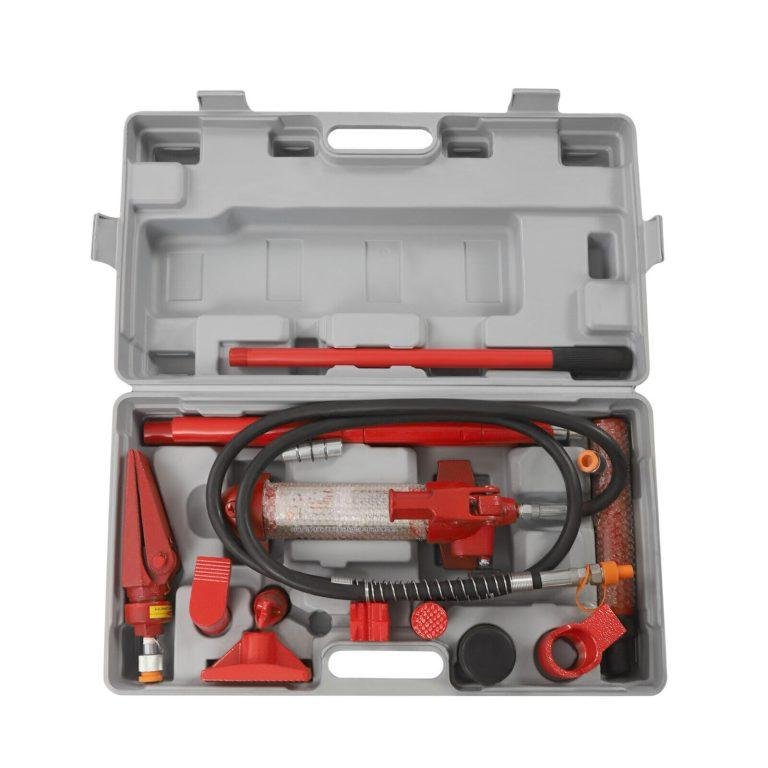To determine the size of ball hitch you need, check the specifications of your tow vehicle’s receiver hitch or consult the vehicle’s owner’s manual. This will provide the appropriate hitch size to ensure a secure and safe towing experience.
Whether you’re planning to haul a trailer or tow a boat, selecting the correct ball hitch size is crucial for safe and efficient towing. The ball hitch, also known as a trailer ball, is the connection point between the towing vehicle and the trailer.
It allows for smooth and controlled movement while ensuring stability on the road. However, selecting the wrong size can lead to a potential disaster. To avoid any mishaps, it’s essential to determine the appropriate ball hitch size for your specific towing needs. Rather than relying on guesswork or trial and error, there are reliable ways to determine the correct size. By following a few simple steps and consulting your tow vehicle’s specifications, you can confidently select the right ball hitch for your towing setup. We’ll outline the key factors to consider and guide you through the process of determining the perfect ball hitch size for your needs.

Credit: selzy.com
Understanding Ball Hitches
To determine the right size ball hitch you need, consider the trailer’s gross trailer weight (gtw) and tongue weight (tw). Check the trailer’s owner’s manual or the tongue for these specifications. Match the gtw and tw with the corresponding ball hitch size to ensure safe towing.
When it comes to towing, having the right ball hitch is essential. The ball hitch is the connection point between the tow vehicle and the trailer, providing stability and control while on the road. Understanding the different types of ball hitches, the importance of choosing the right size, and the factors to consider when selecting a ball hitch will help ensure a safe and successful towing experience.
Different Types Of Ball Hitches:
- Fixed ball hitch: This type of ball hitch has a permanently fixed ball mount and is suitable for towing trailers with a specific coupler size. It offers simplicity and durability, making it a popular choice for regular towing needs.
- Adjustable ball hitch: As the name suggests, this type of ball hitch allows for adjustable height positions, making it easier to match the trailer and tow vehicle’s level. It offers versatility, accommodating trailers with various coupler heights.
- Pintle hitch: Unlike traditional ball hitches, pintle hitches use a lunette ring rather than a trailer coupler. They are commonly used for heavy-duty towing, particularly with agricultural equipment and larger trailers.
Importance Of Choosing The Right Size:
Choosing the right size ball hitch is crucial for a safe and stable towing experience. If the ball hitch is too small, it may not provide sufficient support, leading to increased sway and an unstable connection. On the other hand, using a ball hitch that is too large can result in an improper fit, jeopardizing towing performance and safety.
Factors To Consider When Selecting A Ball Hitch:
- Gross trailer weight (gtw): The gtw is the total weight of the loaded trailer. It is essential to know the gtw as it determines the capacity requirements for the ball hitch. Make sure to select a ball hitch that can handle the gtw of your trailer.
- Ball diameter: Ball hitches come in various sizes, usually ranging from 1-7/8 inches to 2-5/16 inches in diameter. The ball diameter should match the coupler size on your trailer, ensuring a secure and tight connection.
- Vehicle manufacturer’s recommendations: Consult your vehicle’s owner’s manual or contact the manufacturer to determine the recommended ball hitch size and weight capacity for your specific make and model. Following these guidelines will help maintain the vehicle’s towing warranty and ensure compatibility.
- Hitch class: It is essential to consider the hitch class of your vehicle when selecting a ball hitch. Hitch classes define the weight capacity and compatibility of the hitch receiver on your vehicle. Ensure that the ball hitch’s specifications align with your vehicle’s hitch class.
- Safety ratings: Look for ball hitches that meet or exceed industry safety standards, such as those approved by the society of automotive engineers (sae). These safety ratings ensure that the ball hitch has undergone rigorous testing and meets the necessary strength and durability requirements.
Remember, choosing the right ball hitch involves consideration of multiple factors, and it is always better to consult with a towing expert or professional if you have any doubts or uncertainties. By understanding the different types of ball hitches and the importance of selecting the right size, you can ensure a safe and smooth towing experience.
Measuring Your Trailer Coupler
Ensure the correct size ball hitch for your trailer coupler by measuring it accurately. Use a tape measure to determine the diameter, ensuring a secure and safe towing experience.
Measuring The Size Of Your Trailer Coupler:
To ensure a proper fit for your ball hitch, it is essential to measure the size of your trailer coupler accurately. Here’s how you can do it:
- Use a tape measure to determine the inside width of your coupler. Measure the distance between the inner edges of the coupler, as this will give you the exact measurement you need.
- Record the measurement in inches, as this is the standard unit of measurement for ball hitches.
- Take note of any fractional measurements as well, as they may be necessary for finding the right ball diameter.
Determining The Correct Ball Diameter:
Choosing the correct ball diameter is crucial for a secure connection between your trailer and towing vehicle. Here are the steps to find the right ball diameter:
- Refer to your owner’s manual or the manufacturer’s specifications for your trailer to determine the recommended ball diameter.
- If the information is not readily available, inspect your trailer coupler. Look for any markings or labels that indicate the required ball diameter.
- Alternatively, you can measure the width of the coupler’s rounded inner edge. This measurement will help you choose the correct ball diameter.
Calculating The Weight Rating Of Your Ball Hitch:
Before hitching your trailer, it’s important to calculate the weight rating of your ball hitch. This will ensure that the hitch is capable of handling your trailer’s weight. Follow these steps to calculate the weight rating:
- Determine the gross trailer weight (gtw) of your trailer. This is the combined weight of your trailer and its contents.
- Calculate the tongue weight (tw) of your trailer. This is the downward force exerted on the hitch ball by the trailer’s coupler.
- Ensure that your ball hitch has a weight rating that exceeds both the gtw and tw of your trailer. This will provide a safe towing experience.
Remember, accurately measuring your trailer coupler, determining the correct ball diameter, and calculating the weight rating of your ball hitch are essential steps to ensure a safe and secure towing experience. By following these guidelines, you can confidently select the right size ball hitch for your trailer.
Selecting The Right Ball Size
Selecting the right ball size for your hitch is crucial in ensuring safe towing. To determine the correct ball size, check the coupler size on your trailer and match it with the corresponding ball size. Always refer to the manufacturer’s guidelines for proper selection.
When it comes to towing trailers, selecting the right ball size is crucial for a safe and secure connection. Here, we will explore the key factors to consider when determining the appropriate ball size for your towing needs.
Matching The Ball Diameter To The Coupler Size
To ensure a proper fit between the ball and the coupler, it is essential to match the ball diameter to the coupler size. Here are some important points to keep in mind:
- Measure the coupler: Start by measuring the inside diameter of the coupler, which will determine the ball size you need.
- Common ball sizes: The most common ball sizes are 1-7/8 inches, 2 inches, and 2-5/16 inches. Select the ball size that corresponds to the coupler size.
- Coupler labeling: Check the coupler for any labels or markings that indicate the required ball size. This information is usually stamped or engraved on the coupler itself.
Considering The Trailer Weight And Tongue Weight
The weight of the trailer and the tongue weight play a significant role in determining the appropriate ball size. Keep the following points in mind when considering these factors:
- Tongue weight: Tongue weight is the downward force exerted on the hitch ball by the trailer’s tongue. It is typically around 10-15% of the trailer’s total weight. Ensure that the ball you select can handle the tongue weight of your trailer.
- Gross trailer weight: The gross trailer weight is the total weight of the trailer and its contents. Make sure the ball you choose has a maximum weight rating that exceeds the gross trailer weight.
Understanding Weight Ratings And Safety Margins
Weight ratings and safety margins are critical for safe towing practices. Here are some factors to consider in this regard:
- Ball weight rating: Each ball has a weight rating specified by the manufacturer. It is crucial to select a ball with a weight rating that comfortably exceeds the tongue weight and gross trailer weight of your trailer.
- Safety margins: It is advisable to have a safety margin when selecting a ball size. This ensures that the ball is not operating at its maximum capacity and provides an extra level of safety considering unforeseen circumstances and road conditions.
Selecting the right ball size for your trailer is essential to ensure a safe and secure towing experience. By matching the ball diameter to the coupler size, considering the trailer weight and tongue weight, and understanding weight ratings and safety margins, you can make an informed decision that will keep you and others on the road safe.
Factors To Consider When Choosing A Ball Hitch
Choosing the right size ball hitch involves considering factors such as the towing capacity of your vehicle, the weight of the trailer, and the size of the trailer coupler. It’s important to ensure a proper fit for safe and secure towing.
Choosing the right ball hitch is crucial to ensure safe and efficient towing for your vehicle. There are several factors you should consider before making your selection. Keep reading to discover the key elements that will help you determine the perfect fit for your towing needs.
Trailer Tongue Weight Requirements
One of the essential factors to consider when choosing a ball hitch is the trailer tongue weight requirements. The tongue weight refers to the force exerted by the trailer on the hitch ball. It is crucial to match the tongue weight rating of the hitch with the actual tongue weight of your trailer.
Failure to do so can result in unstable towing, difficulty steering, and potential safety hazards. Consider the following points when assessing your trailer tongue weight requirements:
- Determine the tongue weight: Measure the tongue weight of your trailer using a tongue weight scale or consult the trailer manufacturer’s specifications.
- Select the appropriate hitch class: Different hitch classes have varying tongue weight capacities. Choose a ball hitch that has a tongue weight rating equal to or greater than your trailer’s tongue weight.
- Consider weight distribution: If you have a trailer with a high tongue weight, you may need a weight distribution hitch to evenly distribute the weight between the trailer and the tow vehicle.
Understanding The Towing Capacity Of Your Vehicle
Another crucial factor when choosing a ball hitch is understanding the towing capacity of your vehicle. The towing capacity refers to the maximum weight your vehicle can safely tow. Exceeding the towing capacity can put excessive strain on your vehicle’s engine, brakes, and transmission.
Consider the following points when assessing your vehicle’s towing capacity:
- Refer to the owner’s manual: Consult your vehicle’s owner’s manual to find the towing capacity. The manual will provide specific information based on the make, model, and engine configuration of your vehicle.
- Consider additional equipment: In some cases, additional equipment such as a transmission cooler or upgraded suspension may be necessary to safely tow heavier loads. Refer to your vehicle’s manual or consult a professional to determine if any additional equipment is required.
Considering The Type Of Towing You Will Be Doing
The type of towing you will be doing is also an important factor when choosing a ball hitch. Different towing applications require specific types of hitches to ensure optimal performance and safety. Consider the following points when assessing the type of towing you will be doing:
- Trailer size and type: The size and type of trailer you will be towing will determine the appropriate ball size and hitch class required.
- Towing frequency: If you frequently tow trailers of varying sizes, a multi-ball hitch may be a convenient option. This type of hitch allows you to switch between different ball sizes with ease.
- Specialty towing: If you plan on towing specialty trailers such as boat trailers or horse trailers, you may need additional features such as surge brakes or sway control to ensure safe towing.
By considering factors such as trailer tongue weight requirements, understanding your vehicle’s towing capacity, and considering the type of towing you will be doing, you can confidently select the right ball hitch for your needs. Remember to always follow manufacturer guidelines and consult a professional if you have any doubts or questions.
Happy towing!
How To Properly Install And Use A Ball Hitch
To determine the correct size ball hitch you need, measure the diameter of the trailer coupler. The ball diameter should match, typically 1 7/8″, 2″, or 2 5/16″. Selecting the proper size ensures a secure connection between your vehicle and trailer.
Follow these guidelines for a safe and successful installation and use.
When it comes to towing, one of the most critical considerations is ensuring that you have the correct ball hitch and that it is installed and used correctly. This is essential for both your safety and the safety of others on the road.
In this section, we will discuss how to properly install and use a ball hitch, ensuring a secure fit and performing necessary safety checks before towing.
Installing The Ball Mount And Ball Hitch:
- Begin by selecting the appropriate ball mount and ball hitch size for your towing needs. Take into account the weight and size of the trailer you will be towing.
- Start by aligning the holes on the ball mount with the corresponding holes on your vehicle’s hitch receiver. Slide the ball mount into the receiver until it is fully inserted.
- Secure the ball mount in place by inserting the hitch pin and clip through the holes in the hitch receiver and ball mount. Ensure that the hitch pin is fully secure and cannot come loose during towing.
- Attach the ball hitch to the ball mount by inserting it into the mounting hole on the ball mount. Make sure it is properly seated and securely fastened.
Ensuring Proper Attachment And Secure Fit:
- Confirm that the ball hitch size matches the size of the trailer coupler. Refer to the manufacturer’s specifications for the correct size.
- Tighten the ball hitch using a wrench to ensure a secure fit. The ball should not move or rotate on the ball mount.
- Test the attachment by applying pressure or slight force to the ball hitch. It should remain firmly attached without any movement or signs of loosening.
- Check for any potential interference between the ball mount and other vehicle components. Ensure that there is sufficient clearance for turning and maneuvering.
Performing Safety Checks Before Towing:
- Before towing, inspect the ball hitch and ball mount for any signs of wear, damage, or corrosion. Replace any components that appear worn or compromised.
- Ensure that the trailer’s safety chains are properly attached to the vehicle according to the manufacturer’s guidelines.
- Verify that the trailer’s electrical connections are securely plugged into the vehicle’s wiring harness. Check that all lights are functioning correctly.
- Double-check the trailer’s weight distribution to ensure that it is balanced and properly loaded.
By following these steps, you can ensure that your ball hitch is installed correctly, providing a secure fit for safe towing. Remember to always consult the manufacturer’s instructions and guidelines for your specific hitch and trailer setup. Now that you know how to properly install and use a ball hitch, you can hit the road with confidence for your towing adventures.
Safe travels!
Frequently Asked Questions
Find the right ball hitch size for your towing needs by considering factors like weight capacity and trailer tongue size. Measure your trailer’s coupler and check the vehicle’s hitch receiver to ensure a proper fit. Make sure to consult your vehicle’s manual or a professional for accurate recommendations.
While choosing the right ball hitch size may seem like a trivial decision, it is actually an important factor in ensuring the safety and effectiveness of towing your trailer. To help you make an informed choice, let’s address some frequently asked questions about ball hitch sizes.
What Happens If I Use The Wrong Size Ball Hitch?
Using the wrong size ball hitch can lead to various issues, including:
- Insecure attachment: A ball hitch that is too small for your trailer’s coupler may not securely attach the trailer to your vehicle, risking detachment while on the road.
- Height imbalance: If the ball hitch is the wrong size, it can result in improper trailer height, leading to stability problems during towing.
- Excessive stress: Using a ball hitch that is too small may subject it to increased stress, potentially causing damage to both the hitch and the trailer.
Can I Use A Higher-Rated Ball Hitch For Added Safety?
While it might seem like using a higher-rated ball hitch is a good idea for extra safety, it is not recommended. Here’s why:
- Compatibility: Using a ball hitch with a higher weight rating than your trailer requires could result in an incompatible fit, compromising safety.
- Hitch components: Each ball hitch is designed with specific components to accommodate its weight rating. Using a higher-rated hitch may not be compatible with your vehicle’s towing system.
- Manufacturer guidelines: It is best to adhere to the manufacturer’s guidelines for ball hitch sizes to ensure optimal compatibility and safety.
Are There Any Safety Regulations For Ball Hitch Sizes?
Yes, there are safety regulations in place regarding ball hitch sizes. These regulations ensure that trailers and vehicles are properly matched for safe towing. Key points to consider include:
- Industry standards: The society of automotive engineers (sae) has established guidelines for ball hitch sizes based on weight ratings to ensure safe and reliable towing.
- Weight classifications: Ball hitches are categorized based on their weight ratings, and it is essential to choose a hitch that matches or exceeds the weight of your trailer.
- Safety certifications: Look for ball hitches that carry safety certifications, such as the vesc-5 standard, indicating they have undergone rigorous testing to ensure their reliability and safety.
Remember, it is crucial to consult the manufacturer’s guidelines and any relevant regulations to determine the correct ball hitch size for your specific towing needs.
Frequently Asked Questions Of How Do I Know What Size Ball Hitch I Need?
How Do I Know What Size Hitch To Buy?
To determine the right size hitch to buy, follow these steps: 1. Check your vehicle’s owner’s manual or contact the manufacturer for the towing capacity. 2. Measure the trailer tongue height from the ground to match it with the hitch receiver height.
3. Determine the trailer’s gross trailer weight (gtw) and tongue weight (tw). 4. Choose a hitch receiver that matches or exceeds the vehicle’s towing capacity, gtw, and tw. Remember, ensuring proper hitch size is crucial for safe towing. Be aware that different types of trailers may require specific hitches.
If you’re uncertain about selecting the right hitch size, seeking advice from a professional or reputable retailer is recommended. Regular maintenance and periodic inspections of the hitch, as well as following proper towing techniques, further contribute to a safe and successful towing experience.
Can You Use A 1 7 8 Ball On A 2 Inch Hitch?
Yes, you can use a 1 7/8 ball on a 2-inch hitch. The 1 7/8 ball is designed to fit a trailer hitch with a 2-inch diameter. The hitch ball and hitch receiver need to have matching sizes in order to connect properly and safely.
It is important to ensure that the ball is securely attached to the hitch, following the manufacturer’s instructions. This ensures a secure connection between the trailer and the towing vehicle. Using the correct size hitch ball is crucial for safe and efficient towing.
Make sure to choose the appropriate hitch ball size for your specific towing needs, as different trailers may require different size balls. Always double-check the compatibility before towing to avoid any accidents or damage to the equipment.
How Do I Choose A Ball Mount Hitch?
To choose a ball mount hitch, consider the following factors: 1. Determine your towing capacity needs and match it with the appropriate hitch class (e. g. , class i, class iv). 2. Measure the hitch receiver size on your vehicle (e.
g. , 1-1/4″ or 2″) to ensure compatibility. 3. Check the gross trailer weight (gtw) and tongue weight (tw) ratings of the hitch to ensure it can handle the load. 4. Consider the hitch design, such as fixed or adjustable, based on your towing needs.
5. Look for a hitch with a durable construction and corrosion-resistant finish for longevity. 6. Ensure the ball mount has the correct size and type of hitch ball (e. g. , 1-7/8″, 2″, or 2-5/16″) for your trailer’s coupler size.
7. Consider additional features like anti-rattle devices or built-in sway control for added safety and convenience. 8. Finally, consult the vehicle owner’s manual and a professional if you are unsure about the right ball mount hitch for your specific vehicle and towing needs.
What Are The Three Most Common Ball Hitch Sizes?
The three most common ball hitch sizes are 1-7/8 inches, 2 inches, and 2-5/16 inches. These sizes refer to the diameter of the ball that attaches to the trailer coupler. The 1-7/8 inch ball hitch is typically used for lightweight trailers and small towing applications.
The 2 inch ball hitch is the most common size and is suitable for a wide range of trailers. The 2-5/16 inch ball hitch is heavier duty and is commonly used for larger trailers and heavier loads. When selecting a ball hitch, it is important to match the hitch size with the trailer coupler size for secure and safe towing.
It is recommended to consult the owner’s manual or a professional to determine the appropriate ball hitch size for your specific towing needs.
Conclusion
To ensure safe and effective towing, knowing the right size ball hitch is crucial. By considering several factors such as the gross trailer weight (gtw) and tongue weight (tw), you can determine the correct hitch size for your towing needs.
Begin by identifying the gtw of your trailer, and then select a ball hitch with a matching rating. The tw, which is the downward force applied by the trailer’s tongue onto the hitch, should also be considered. Ensure that the hitch can handle the tw of your trailer without exceeding its maximum load capacity.
By understanding these key factors and using a reliable hitch calculator, you can confidently determine the appropriate ball hitch size for your towing setup. Remember to regularly check and maintain your hitch for safe towing experiences. Say goodbye to guesswork and hello to worry-free towing with the right-sized ball hitch.





